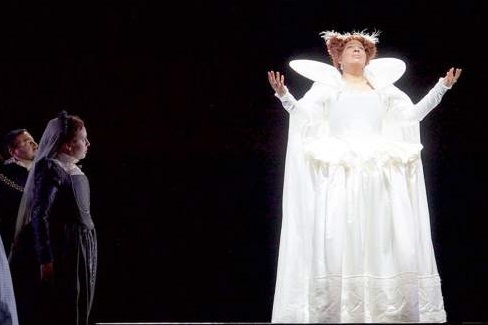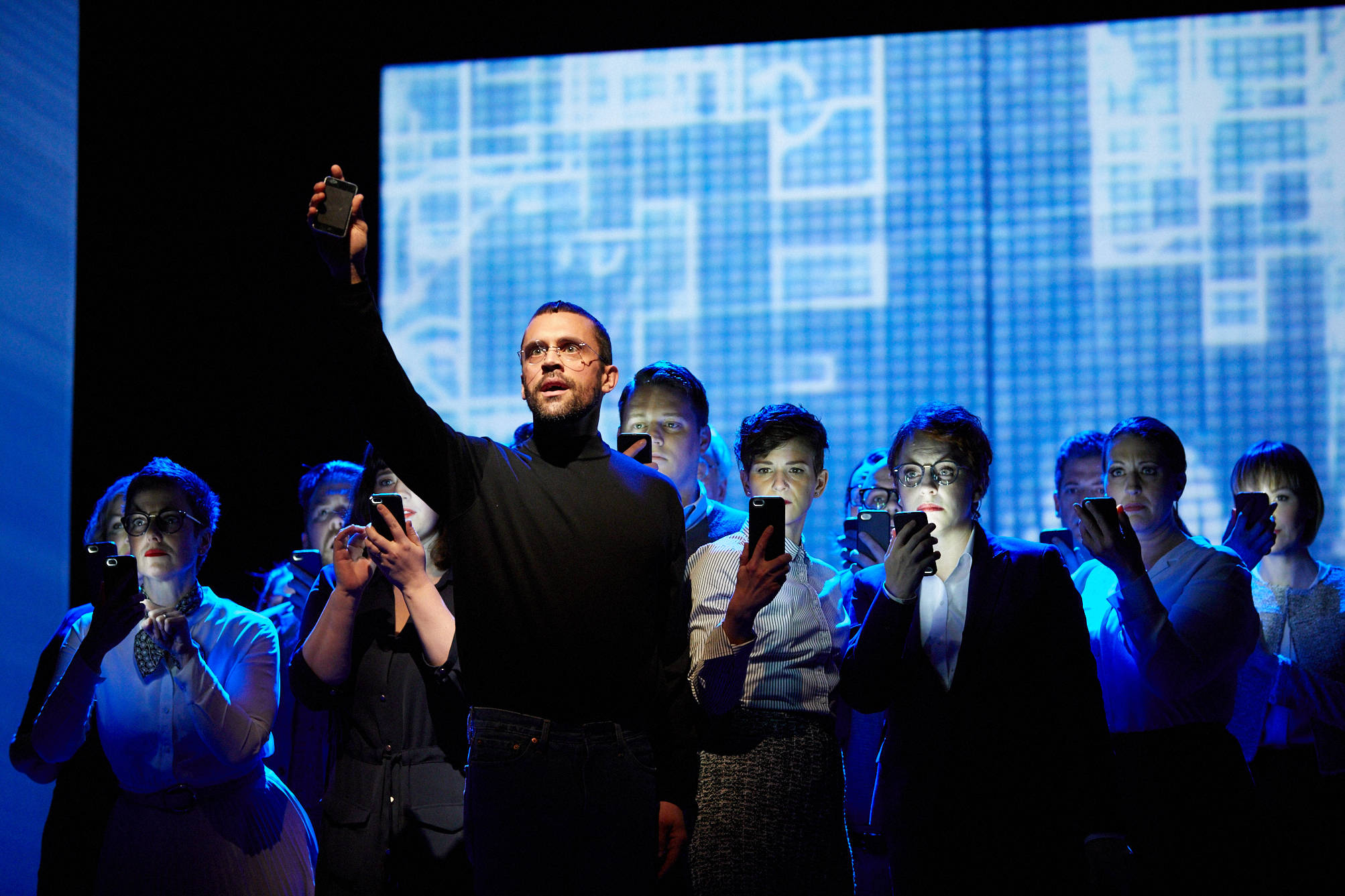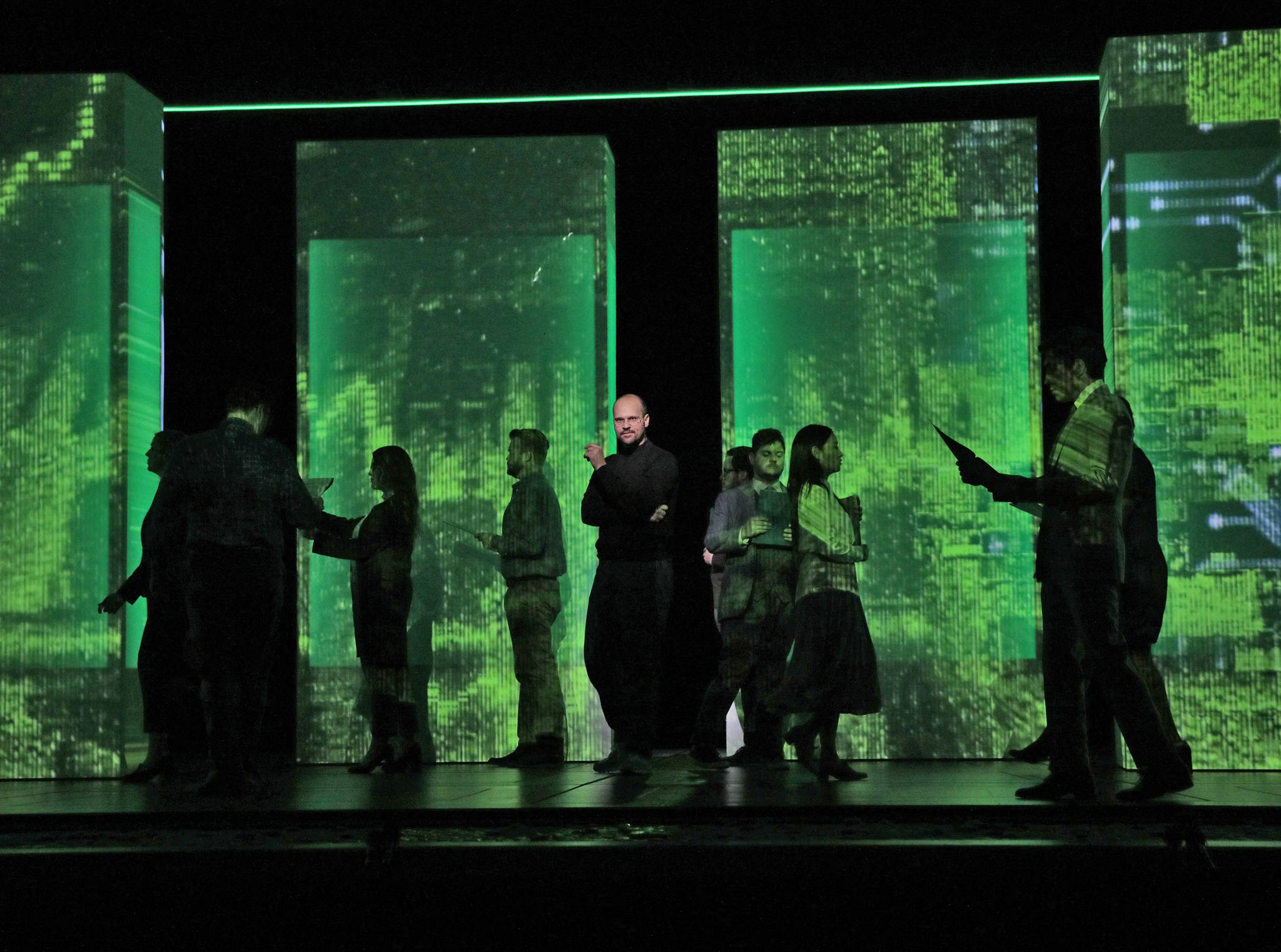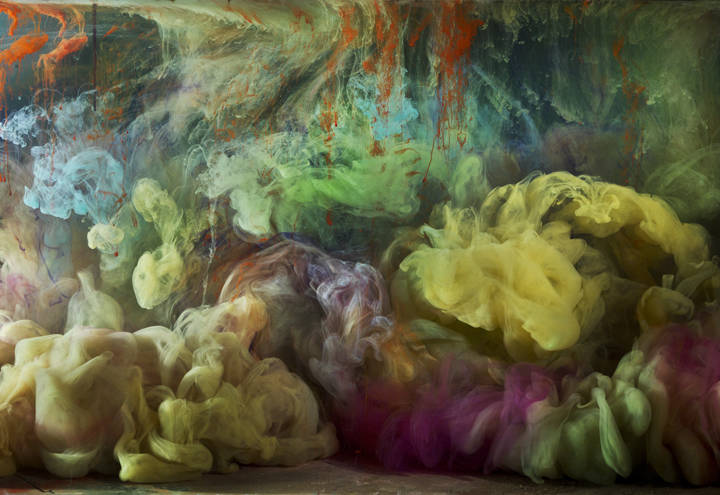No one would dispute that in stagings of bel canto operas—the early-19th-century Italian school—vocal excellence is the main priority. The challenge lies in how to frame it to best advantage—how much weight to give all the other parameters of a performance. In its thoroughly satisfying and powerful production of Mary Stuart, Donizetti’s 1835 tale of the battle between Elizabeth I and Mary, Queen of Scots, Seattle Opera shows everyone how to do it.
First, don’t be tempted into opulent period realism, under the assumption that the audience will need eye candy to balance the ear candy, and here’s why. Composers of this school—Donizetti and his compatriots Rossini and Bellini being the three at the top—wrote speedily and prolifically to sate Europe’s demand for new product, and thus did not hesitate to fall back on formulas. Nearly all arias, and many ensembles, were laid out in a time-tested pattern: recitative (intoned speech) to set up a scene, a slow movement to emote, some plot twist to change the mood, and a fast movement to show off dexterity and spur applause. This plan, so generous to the singer, is less solicitous of the patience of a contemporary listener, and, reused again and again, can grow ponderous and hidebound unless staged with care. A heavy period set, as stolid as the formula itself, would have killed this show.
Seattle Opera went another direction. Though Jessica Jahn’s costumes are more or less Tudor (with occasionally a fantastical twist, like a spun-sugar gown for Elizabeth that looks like something out of A Midsummer Night’s Dream), Neil Patel’s sets are not. Two set pieces are on wheels: a monolithic black pulpit for Elizabeth and a staircase of steel bars, suggesting a prison cell, for Mary. These plus a copper ceiling, a back wall lit in various colors, and a large Titian-like tapestry are the sum of the production’s visual interest. Uncluttered, flexible, and thoughtfully detailed, this set makes all the difference—a telling frame for the opera’s emotional impact with a cleanness that makes its action flow like spring water. (That backlight is blood-red after the queens’ confrontation, and that ceiling descends as Mary walks to her execution; such simple effects, yet so mood-enhancing.)
Also, do as this cast does, and keep your performances, like the set, forthright and unfussy. Opening night’s cast included Mary Elizabeth Williams in full, glamorous voice as Elizabeth, playing the role with utter naturalness and ease of manner—presence without artifice. (So comfortable and convincing in the part did Williams sound that I began to imagine she must just naturally sing everything all the time: in the checkout line at Target, maybe, or getting her driver’s license renewed.) As Mary, Joyce El-Khoury filled in for an indisposed Serena Farnocchia. She and Williams had not been scheduled to perform together, but how perfectly matched they were, both of them grand and charismatic at full throttle. El-Khoury also provided a few breathtaking fil de voce effects, singing with only an ultra-quiet, ultra-light “thread of voice.” Hers were golden.
The two characters clash at the end of Act 1 in a scene masterfully constructed by Donizetti’s librettist, Giuseppe Bardari: Elizabeth hurls imperious insults, but Mary holds back, armed with an even harsher one (and a higher high note), discharging it right when it will wound the most. The audience gasped. Explosive yet stately, it’s the most dignified catfight you’ll ever see. (These are queens, not Republican presidential candidates.) McCaw Hall, Seattle Center, seattleopera.org. $25 and up. 7:30 p.m. March 9, 11, 12.
Gavin Borchert writes about classical music, performing arts, and sometimes soccer for Seattle Weekly. He can be reached at gborchert@seattleweekly.com. Get more from your favorite writers with our weekly newsletters.








